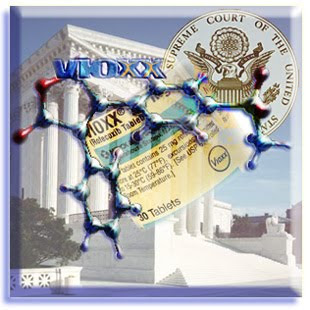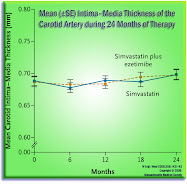The ribbons and picket fences were dubbed "STEVEs" in 2014 -- from "Over the Hedge" the 2006 animated feature, in which all the denizens assign the name "Steve" to any being they cannot identify. It now seems clear that the combination is not an aurora, in the traditional sense -- as it occurs in lower latitudes, and true auroras don't exhibit these long, streaking spears -- the green picket fence optical effect, below the traditional swaying bands of purple. Interestingly, the back-ro-nym "Strong Thermal Emission Velocity Enhancement" was coined by Robert Lysak, at a meeting of the American Geophysical Union, almost exactly four years ago, tonight -- which was subsequently adopted by the scientists at NASA's Goddard Space Flight Center.
The green "fence" emissions seem to be related to eddies in the supersonic flow of charged particles, similar to the eddies seen in a river, which move more slowly than the other water around them. The green bars in the picket fence are moving more slowly than the structures in the purple emissions, and some scientists have speculated they could be caused by turbulence in the charged particles from space.
We may soon know (with fairly high confidence) the specific mechanics of the celestial physics in play here. But for now, NASA | Goddard will continue to study it -- thus:
. . .In 2018, a new aurora-like discovery struck the world. From 2015 to 2016, citizen scientists reported 30 instances of a purple ribbon in the sky, with a green picket fence structure underneath. Now named STEVE, or Strong Thermal Emission Velocity Enhancement, this phenomenon is still new to scientists, who are working to understand all its details. What they do know is that STEVE is not a normal aurora – some think maybe it’s not an aurora at all – and a new finding about the formation of streaks within the structure brings scientists one step closer to solving the mystery.
“Often in physics, we build our understanding then test the extreme cases or test the cases in a different environment,” Elizabeth MacDonald, a space scientist at NASA’s Goddard Space Flight Center in Greenbelt, Maryland, explains. “STEVE is different than the usual aurora, but it is made of light and it is driven by the auroral system. In finding these tiny little streaks, we may be learning something fundamentally new in how green auroral light can be produced.”
These “tiny little streaks” are extraordinarily small point-like features within the green picket fence of STEVE. In a new paper for AGU Advances, researchers share their latest findings on these points. They suggest the streaks could be moving points of light – elongated in the images due to blur from the cameras. The tip of the streak in one image will line up with the end of the tail in the next image, contributing to this speculation from the scientists. However, there are still a lot of questions to be answered – determining whether the green light is a point or indeed a line, is one extra clue to help scientists figure out what causes green light.
“I’m not entirely sure about anything with respect to this phenomenon just yet,” Joshua Semeter, a professor at Boston University and first author on the paper, said. “You have other sequences where it looks like there is a tube-shaped structure that persists from image to image and doesn’t seem to conform to a moving point source, so we’re not really sure about that yet.”. . . .
Grinning. . . regular diaspora Zoom fam call, completed now.
And, in motion, the purples:
नमस्ते



















No comments:
Post a Comment